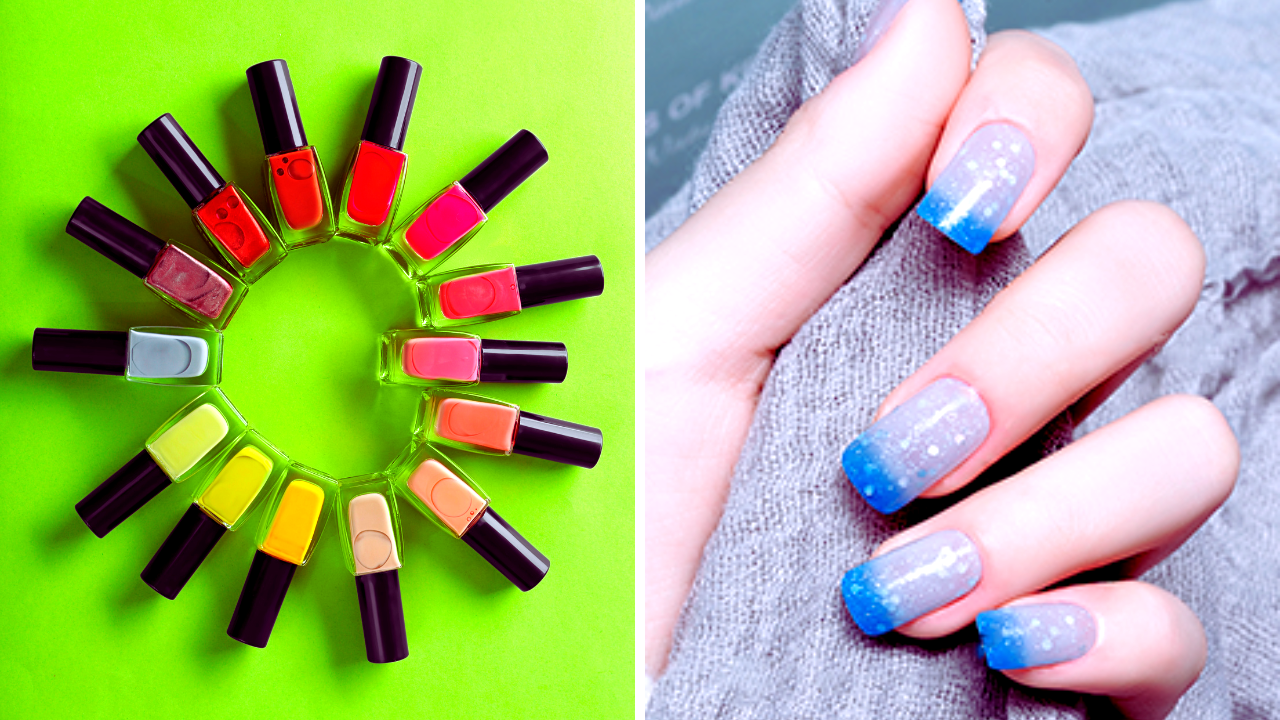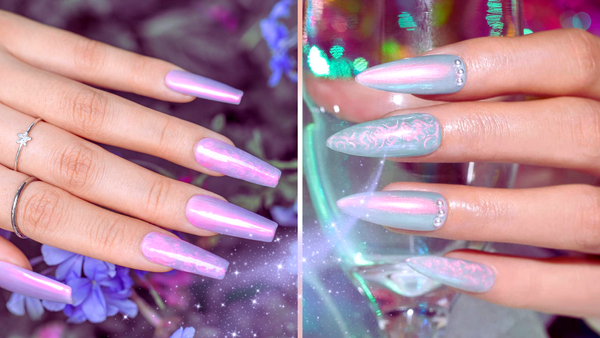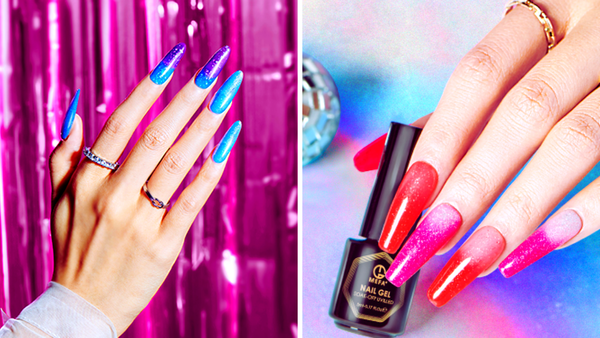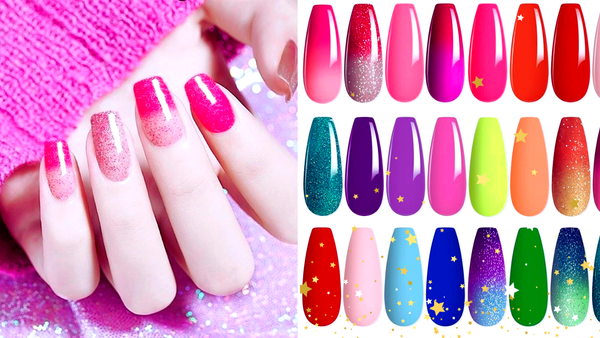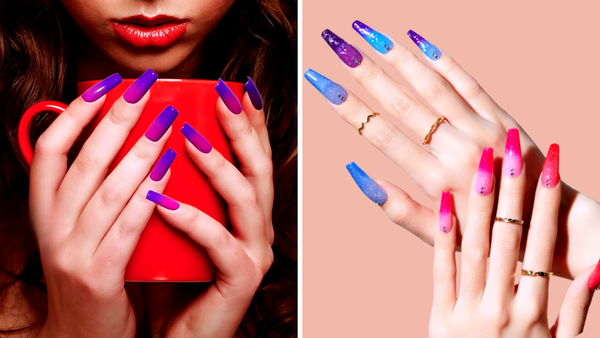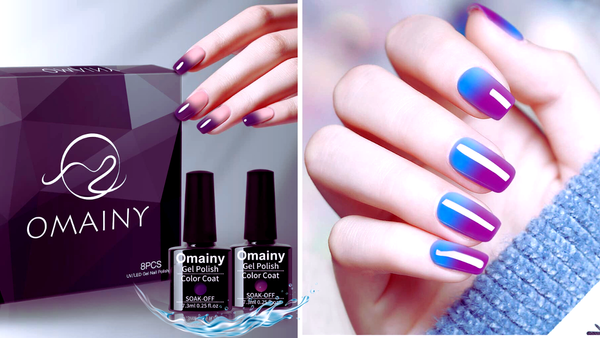Are you puzzled by your nail polish suddenly shifting shades? You might notice that the color of your nail polish isn’t as stable as you thought. If you’re asking yourself, ‘What does it mean when nail polish changes color,’ you’re about to uncover the science behind this intriguing occurrence. Nail polishes with special pigments can change color when exposed to temperature variations or UV light, turning your manicure into a dynamic fashion statement. Continue reading to discover why these changes happen and how they can be a temporary yet show-stopping aspect of your nail aesthetics.
Key Takeaways
- Nail polish changes color due to thermochromic pigments that react to temperature changes and photochromic pigments that respond to UV light exposure, both reversible.
- Various substances, including cleaning supplies, cosmetics, and certain foods, can temporarily cause nail polish to discolor. Precautions such as wearing gloves and using base coats help prevent these effects.
- Color changes in nail polish brought about by lifestyle factors, improper storage, and extended wear can often be remedied using non-acetone nail polish remover, natural alternatives like tea tree oil, or by seeking professional services at a nail salon.
Decoding the Color Shift in Nail Polishes
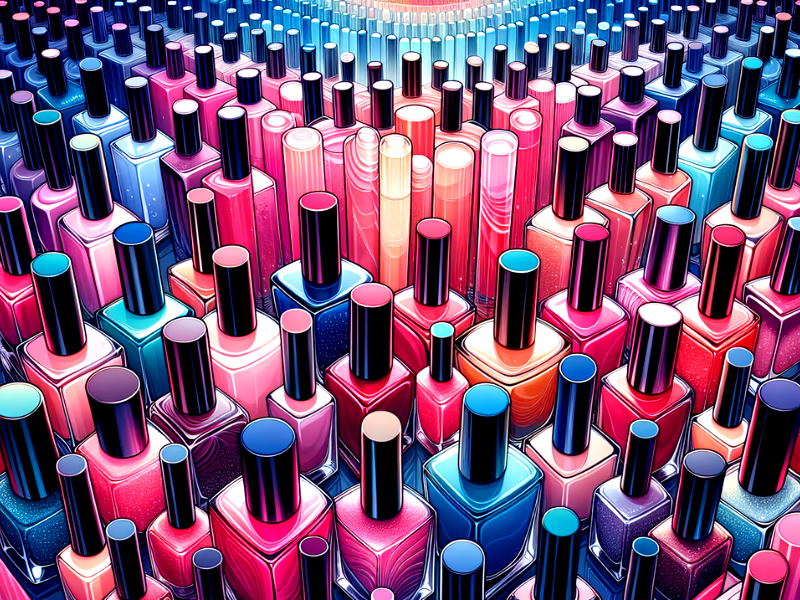
The color-changing phenomenon in nail polishes is primarily due to special pigments. These pigments, notably thermochromic and photochromic ones, react to certain external stimuli, resulting in an alteration of the nail polish color. Thermochromic pigments respond to temperature variations, while photochromic pigments are sensitive to UV light, often found in sunlight or salon UV lamps.
But what does this mean for your manicure? Well, your perfectly painted pink nails might turn a different color when sipping hot coffee or dipping in the cool pool. Or, if you’re wearing gel polish, a day out in the sun might give your nails a surprise makeover! Let’s dive deeper into these fascinating color shifts.
Temperature's Play on Pigments
Thermochromic pigments in nail polish are like tiny chameleons. They change color when exposed to different temperatures, creating a fascinating nail polish change. For instance, if you’re in a chilly room, your nail polish might appear darker. But as you enter a warm room or hold a hot cup of tea, the polish can lighten or change to a completely different color.
These pigments typically react at around 86 degrees Fahrenheit, but some can also respond to temperatures as low as 72 degrees. So, don’t be surprised if your nails change color during a hot bath or a cold swim. It’s just the thermochromic pigments at play!
The Sun's Influence: UV Light and Gel Nails
UV light isn’t just for tanning. It can also work its magic on your gel nails. When exposed to UV light, the photochromic pigments in gel polish react and result in a color change. This feature makes gel polish unique and versatile. This happens due to photopolymerization, where UV light triggers a chemical reaction that solidifies the liquid polymer, altering the color of the gel polish.
But a word of caution: overexposure to UV light can also cause gel polish discoloration. So, while a sunny day might give your nails a mini makeover, too much sun can lead to unwanted changes in color. Moreover, certain tanning products can darken the shade due to the absorption of persistent pigments, which certain chemicals may cause.

The Reversibility of Color Changes
The good news is that these color changes are not permanent. Once the external temperature influence is removed, nail polish will revert to its original hue. So, if your nails have turned pink to purple after a hot bath, just rinse them with room-temperature water, and voila! They’re back to their fabulous pink.
The Chemistry Behind Nail Polish Discoloration
Temperature and UV light are not the only culprits behind nail polish discoloration. Various chemical reactions can also cause your nails to change color. The chemicals in cleaning products, cosmetic products, and even certain food items can interact with your nail polish, leading to discoloration.
But don’t worry. These color changes are typically temporary and reversible. With the right care and precautions, you can keep your nails looking vibrant and fabulous. Let’s explore how these different substances can affect your manicure.
Interaction with Cleaning Supplies
Cleaning your house is a chore, and it’s even more frustrating when it ruins your manicure. Many cleaning supplies contain chemicals that can react with your nail polish, causing it to change color. This is especially true for gel nail polish, which can turn a different color when it comes into contact with these cleaning chemicals.
But remember, this discoloration is usually not permanent. When you stop using the offending cleaning product, your nail polish should gradually revert to its original color. So, the next time you’re scrubbing the floors or washing the dishes, consider wearing gloves to protect your manicure.
Cosmetic Product Interference
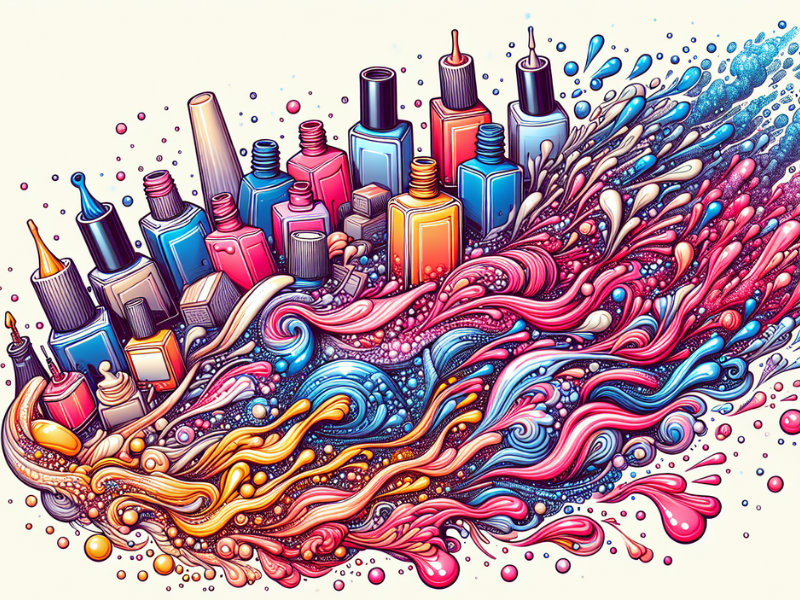
Cosmetic products, like makeup and skincare lotions, can also interfere with your nail polish color. These products can stain or discolor your nails, especially if you’re wearing gel polish. Even hair dye and bleach can alter the color of your nail polish.
But don’t fret! There’s a simple hack to remove these stains. Surprisingly, hairspray can be used to help remove stains from your nails without the excessive use of nail polish remover. With a few sprays and a gentle rub, your nails should be stain-free and ready for your next manicure!
Food Ingredients as Culprits
Nothing ruins a manicure faster than a cooking accident. Certain food items, especially those high in acid content or pigmentation, can affect the color of your nail polish. Spices like turmeric and tamarind, or pigmented fruits like beets and berries, can stain your nails or cause them to change color.
But these color changes are usually temporary. Once you wash off the offending food item, your nail polish should return to its original color. So, the next time you’re cooking with spices or eating a juicy pomegranate, be mindful of your manicure!
Nail Care Tips to Prevent Discoloration
As they say, prevention is better than cure. With a few simple nail care tips, you can prevent discoloration and keep your nails looking pristine. From proper storage to protective measures during wear, let’s explore how you can maintain the color and quality of your nail polish.
Proper Storage of Nail Polishes
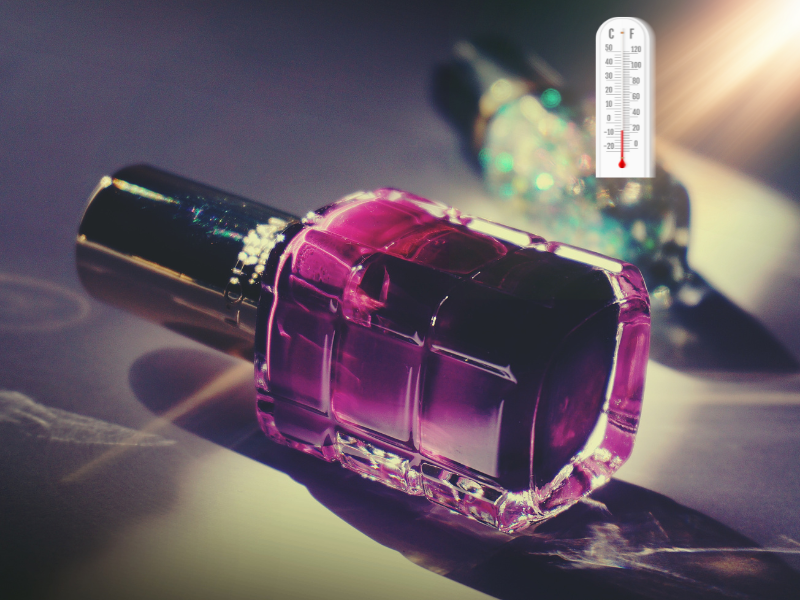
Proper storage is crucial for maintaining the color and quality of your nail polishes. To store nail polish effectively, keep them away from direct sunlight and store them at room temperature to help prevent color changes. It’s also important to avoid shaking your nail polish bottles, which can create air bubbles that might lead to discoloration. Instead, try rolling the bottle between your palms to mix the polish. And remember, nail polish has a limited shelf life. If it becomes thick, changes color, or develops an unpleasant odor, it’s time for a replacement.
Protective Measures During Wear
Protecting your nails during wear is also essential for preventing discoloration. Wearing gloves during cleaning can save your manicure from harsh detergents and soaps. Applying a base coat before your nail polish can also help. The base coat is a barrier, protecting your nails from potential stains or discoloration.
Remedies for Restoring Nail Polish Color
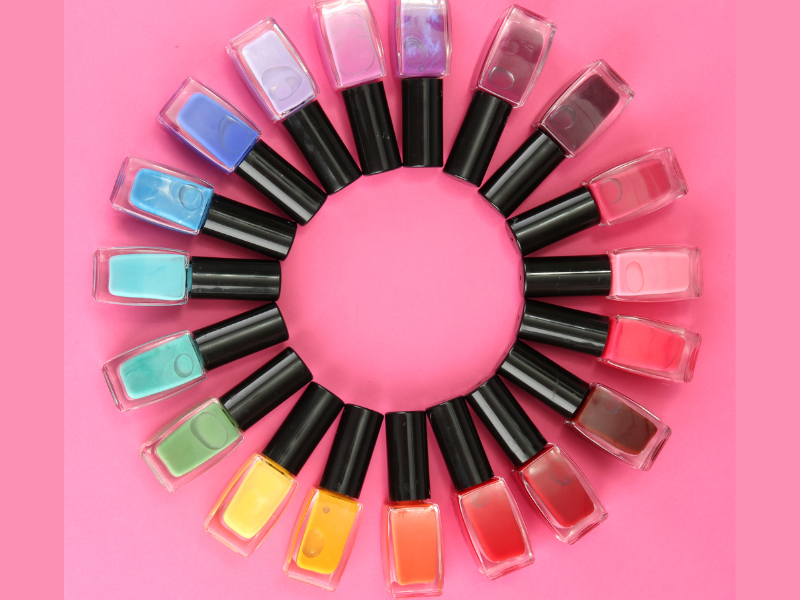
Despite your best efforts, your nail polish might still change color. But don’t despair. There are ways to restore the original color of your discolored nail polish, ranging from using a fresh top coat to specialized treatments.
Using Nail Polish Remover Wisely
Non-acetone nail polish remover can be a lifesaver for discolored nails. It’s gentle on the nails and less likely to cause further yellowing than its acetone counterparts. For mild discoloration, dab a cotton ball soaked in non-acetone nail polish remover or isopropyl alcohol on the stained area. This should gently cleanse your nails and restore their original color.
Natural Alternatives for Nail Brightening
If you prefer a more natural approach, tea tree oil is a great option. Known for its antibacterial properties, it can also help brighten stained nails. To prepare a natural soak, mix lukewarm water with a few drops of tea tree oil. Soak your nails in this mixture for at least five minutes, and you should see your manicure brighten up quickly.
Summary
In conclusion, color-changing nail polish can be caused by various factors, from temperature changes and UV light exposure to chemical interactions and lifestyle choices. But with the right care and precautions, you can keep your nails looking vibrant and fabulous. So, remember to store your nail polishes properly, protect your nails during wear, and use gentle, non-acetone removers to cleanse discolored nails. When in doubt, consult a nail salon professional. After all, your nails reflect your style and personality, and they deserve the best care!
FAQ's
Why does my nail polish change color in the sun?
Your nail polish changes color in the sun because it contains photochromic pigments that react to UV light, causing the color change when exposed to sunlight.
Can smoking affect the color of my nail polish?
Yes, smoking can cause yellowing or discoloration of your nails due to the nicotine in cigarettes. This could affect the color of your nail polish.
How can I prevent my nail polish from discoloring?
To prevent nail polish discoloration, protect your nails during wear, store polishes properly, and use a base coat for added protection.
